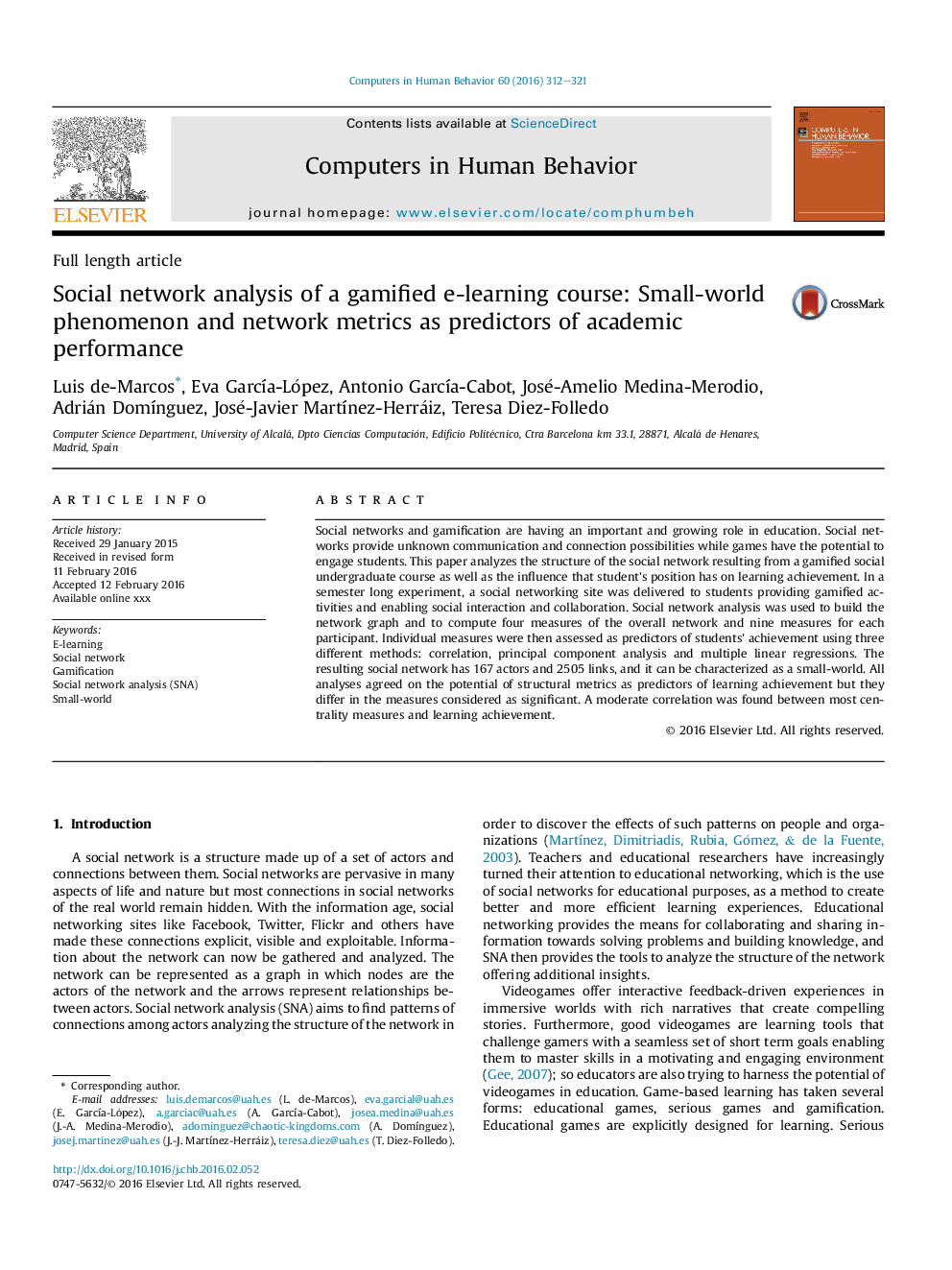| Article ID | Journal | Published Year | Pages | File Type |
|---|---|---|---|---|
| 6837266 | Computers in Human Behavior | 2016 | 10 Pages |
Abstract
Social networks and gamification are having an important and growing role in education. Social networks provide unknown communication and connection possibilities while games have the potential to engage students. This paper analyzes the structure of the social network resulting from a gamified social undergraduate course as well as the influence that student's position has on learning achievement. In a semester long experiment, a social networking site was delivered to students providing gamified activities and enabling social interaction and collaboration. Social network analysis was used to build the network graph and to compute four measures of the overall network and nine measures for each participant. Individual measures were then assessed as predictors of students' achievement using three different methods: correlation, principal component analysis and multiple linear regressions. The resulting social network has 167 actors and 2505 links, and it can be characterized as a small-world. All analyses agreed on the potential of structural metrics as predictors of learning achievement but they differ in the measures considered as significant. A moderate correlation was found between most centrality measures and learning achievement.
Related Topics
Physical Sciences and Engineering
Computer Science
Computer Science Applications
Authors
Luis de-Marcos, Eva GarcÃa-López, Antonio GarcÃa-Cabot, José-Amelio Medina-Merodio, Adrián DomÃnguez, José-Javier MartÃnez-Herráiz, Teresa Diez-Folledo,
